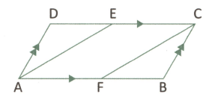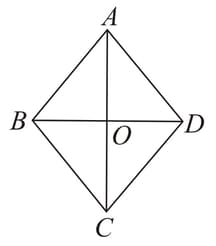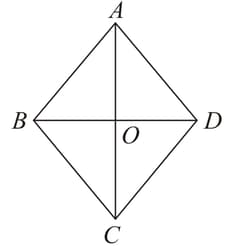Parallelogram and Rhombus
Parallelogram and Rhombus: Overview
This topic covers concepts such as Parallelogram, Elements of a Parallelogram, Properties for Sides of a Parallelogram, Properties for Angles of a Parallelogram, Properties for Diagonals of a Parallelogram, Rhombus, etc.
Important Questions on Parallelogram and Rhombus
Which of the following is true for the adjacent angles of a parallelogram?
is a parallelogram, bisects and bisects . If
Prove that .
Choose the correct answer.
Among the following, the statement that is not true is:
is a rhombus. The measure of is :
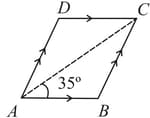
If a quadrilateral is both a parallelogram and a kite, then it is a rhombus.
Draw two lines of lengths and , which bisect each other at right angles. Join the end points. What figure do you get?
Consider the Parallelogram and answer the following question.
Is ? (opposite sides)
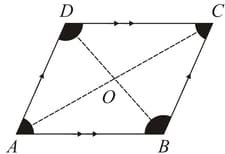
In the following figure, two intersecting diagonals have been drawn.
If the end points of these diagonals are joined, what type of quadrilateral would you get?
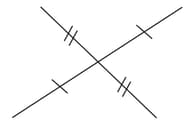
If the length of one side of a rhombus is equal to the length of one diagonal, find the angles of the rhombus.
If one angle of a rhombus is , find the measure of the other angles.
The length of the diagonals of a rhombus are cm and cm, respectively. Find the length of all its sides.
Find the missing angles in the following parallelograms :

A parallelogram with all sides equal is called a:
ABCD is a parallelogram in which a pair of adjacent angles are in the ratio . Find the measure of all the angles.
ABCD is a parallelogram.
Find the values of, , and .
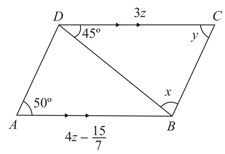
The lengths of the two sides of a parallelogram are and . The perimeter is cm. Find the value of .
If a parallelogram has one angle measuring , find out the measure of the other angles.
If an angle of a parallelogram is twice its adjacent angle, then the angles are:

